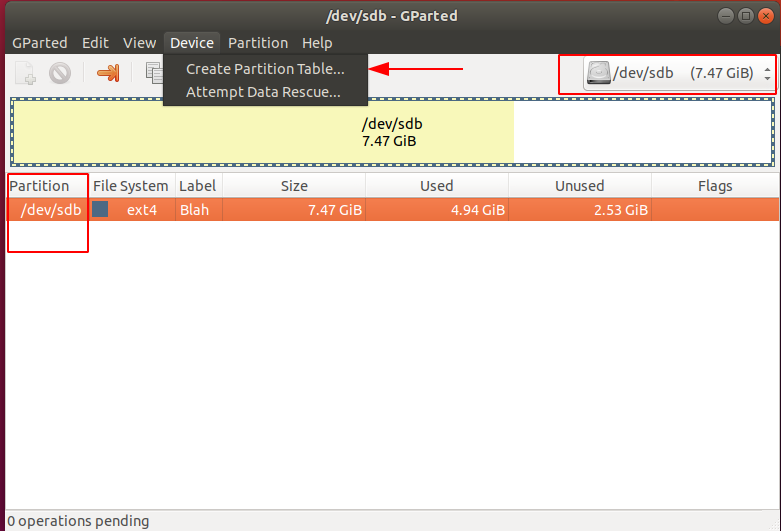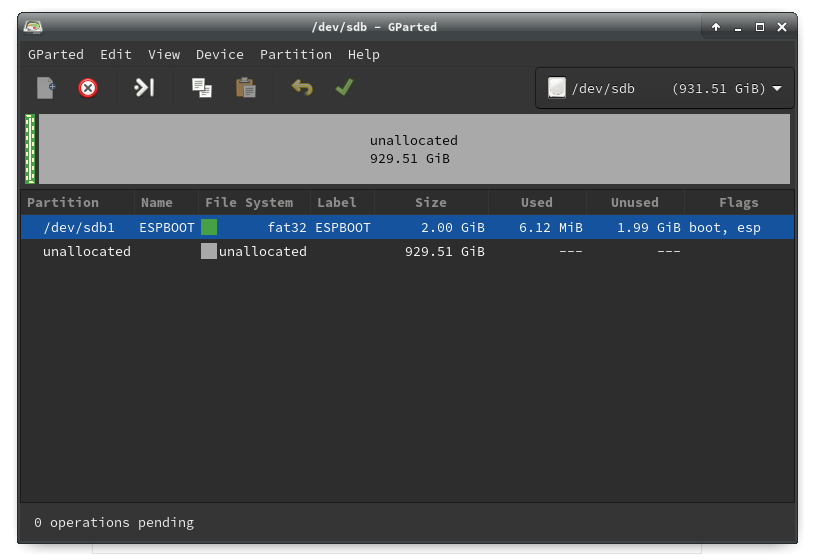
– Mount the 3rd partition and create a “ nf” file in its root, with “ / union” as its content. – Format the 3rd partition as ext4 and label it “ persistence” ( IMPORTANT! Spell it right!) Some computers you can just click F12 and select it from a list. Step 5: Reboot the computer and make sure your BIOS/uEFI is set to boot from your USB drive first.
#GPARTED USB SECURE BOOT ISO#
– Start Gparted and resize (shrink) Kali partition to the minimum size and recreate the 3rd partition using the left space. Unetbootin overwrites a few of the files already set in place from the Parted Magic iso image. – Boot into another linux installation or live and then attach the live usb. – Reopen Bootice and now use “ Set Accessible” on the 1st partition, to let Windows see you drive as a normal 8gb one. – Create “ grub.cfg“ in “ /boot/grub” with this content: if loadfont /boot/grub/font.pf2 then set gfxmode=auto insmod efi_gop insmod efi_uga insmod gfxterm terminal_output gfxterm fi set menu_color_normal=white/black set menu_color_highlight=black/light-gray menuentry "Kali Live"

– Then, copy “ BOOT圆4.EFI“ and “ grub圆4.efi in this folder. – When the installation is complete, create “ /EFI/BOOT/” folders tree in the root of the 2nd partition.
#GPARTED USB SECURE BOOT INSTALL#
– Now Windows will recognize the 2nd partition of your drive, so you can install Kali iso on it using “ Universal-USB-Installer” (download it from here). – Using Windows, download (from here) and run “ Bootice” utility, select your usb drive, click on “ Parts Manage“, select the 2nd partition (/dev/sdb2) and then click on “ Set Accessible” button. In my case, I used a 16gb drive I partitioned in this way: – Using a linux installation or live session and Gparted (or any other partitioning tool), create 3 partitions on your usb drive. – First of all, you must disable Secure Boot from UEFI BIOS, since Kali lacks the needed signature to let it boot with this setting on. In this guide, I will share with you the steps I took, not only to start Kali Linux live under UEFI from usb drive, but also to make it persistent, while still being able to use (part of) it as a normal usb drive in Windows. Luckily, you can still boot it on a UEFI system, but you’ll need to get your hands a little bit dirty.

It could be a problem if you can’t or don’t want to switch to BIOS legacy boot.

It seems that the latest (2016.1) Kali Linux (and its base distro, Debian) doesn’t support UEFI when booted in live mode out of the box.


 0 kommentar(er)
0 kommentar(er)
